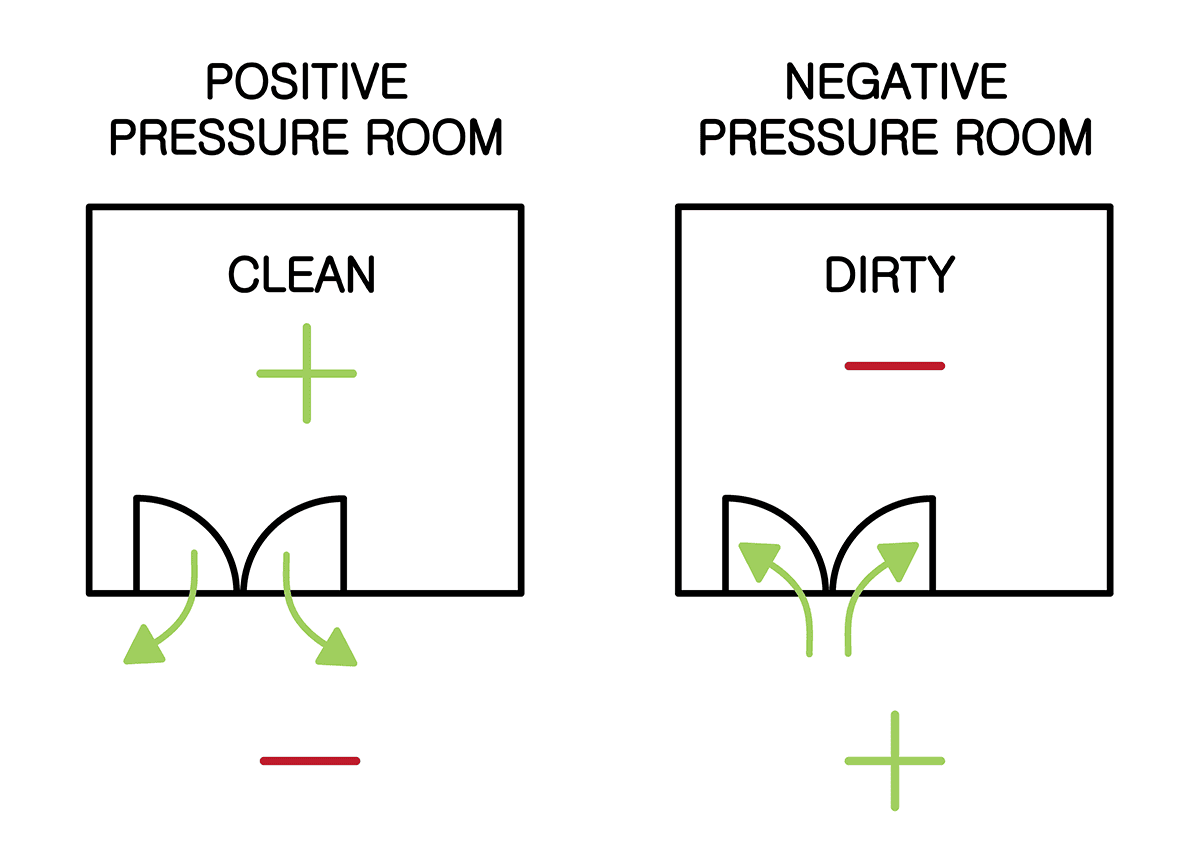Cleanrooms are engineered facilities that minimize the level of contaminants inside them. Because they control the number and size of particles in the room, cleanrooms enable specific research and manufacturing processes to take place.
Cleanroom systems use filters to reduce particle concentration to low levels, and they use air pressure to prevent contamination from entering. They also control variables like airflow, humidity, and temperature. Staff must be properly trained and wear protective equipment to prevent contaminating the environment. All materials, including insulation, must meet rigorous cleanroom standards.
Cleanroom Manufacturing
Many industries depend on cleanrooms for research and manufacturing products, including medical equipment, pharmaceuticals, and semiconductors. These include:
- Automotive
- Biotechnology
- Electronics/semiconductors
- Food processing and manufacturing
- Life sciences

Cleanrooms vs. Controlled Environments
Cleanrooms have stricter requirements than controlled environments. Cleanrooms are used to manufacture products that require an environment to be completely free of chemicals, bacteria, pathogens, and particulate matter at all times. Because they require particle and contaminant control, they have more stringent controls than controlled environments.
Controlled environments require specific parameters to be met, usually relating to the regulation of temperature and humidity. These environments are used for applications where acceptable temperature and humidity ranges are critical factors for optimal performance. They are used for precision machinery such as CMM machines, data systems, servers, and other high-tech facilities that can fail due to overheating.
Cleanroom Classifications
ISO 14644-1
Cleanrooms are internationally classified by ISO 14644-1 standards. ISO (International Organization for Standardization) classifications specify the concentration of airborne particles allowed per cubic meter of air, as well as the particle size. The classes range from 1 through 9, with ISO 1 being the cleanest environment.
Cleanrooms with multiple zones can have multiple ISO classifications. ISO 9 classifies the “dirtiest” room, although this is far cleaner than regular rooms. The most common classes are ISO 7 and 8.
Federal Standard 209E
Before the ISO standards were put in place, cleanrooms within the United States were classified by the Federal Standard 209E. These standards specify the size and number of particles by cubic foot or air and include Class 1, Class 10, Class 100, etc.
Although the U.S. General Services Administration (GSA) canceled Federal Standard 209E in 2001, industry professionals still commonly refer to these classes. A Federal Standard Class 100 cleanroom permits the equivalent particle concentration as an ISO 5.
Cleanroom Construction
These facilities must adhere to specific rigorous standards. Due to the precise design and engineering involved, these systems should only be built by professional cleanroom construction companies.
Some considerations include:
- Cleanliness in specific areas – some cleanrooms have multiple areas which require different levels of cleanliness
- Environmental parameters including temperature and humidity
- Floor layout – some systems require floor layouts that optimize manufacturing processes. Critical work areas are also identified
- Requirements for equipment including process piping, storage tanks, etc.
- Identification of filter systems that fulfill requirements and how the filtration system affects airflow
- Installing monitors and network connections for electronic communication
- Occurrence of dynamic heat loads and thermal management needs
Additional points to remember include the fact that cleanliness is not static. For installations with multiple rooms, the cleanest room must be kept under the highest positive pressure to prevent contamination from lower-level cleanrooms. The cleanest room must also have only one entrance to avoid workers using it as a pathway to lower-level rooms.

Filtered Air
Filters help control contamination and provide fresh air. First, cleanrooms remove pollutants from the air outside the room. Then, the ambient air is drawn into a filter system (either ULPA or HEPA) which cleans and decontaminates the air according to precise specifications. This clean air is then forced into the room. Any contaminated air inside is either removed by registers or recycled by filters.
HEPA (High-Efficiency Particulate Air) and ULPA (Ultra Low Particulate Air) filters trap particles. Generally, higher-rated, larger cleanrooms use ULPA filters due to the need to filter out the smallest contaminants.

In addition to filtration, clean room air should flow with uniform velocity to reduce air turbulence and particle movement.
Cleanroom Process Piping
In cleanroom design, consideration must be given to process piping. Process pipes transport ultra-high-purity gases and liquids that are used in the manufacturing process. Suitable materials must be chosen for the pipework. The pipework must also be completely clean when installed, to avoid any contamination of the area. Considerations for appropriate process piping include:
- The internal bore must be smooth and consistent to achieve optimal flow and avoid potential areas where microbes can accumulate
- Degradation – the pipeline must be long-lasting to avoid both contamination over time and reduce maintenance costs.
- Special attention must be paid to installing, welding, post-treatment, and cleaning process piping. These are all areas where undesirable degradation and contamination can happen.
- Quality control.
- Proper pipe insulation if the transported fluids are temperature-sensitive.
Cleanroom Pipe Insulation
Pipe insulation maintains the temperature of transported gases and liquids within acceptable parameters. In cleanrooms, pipe insulation should be non-toxic, non-fibrous, durable, able to tolerate harsh sanitizing chemical sprays, and constructed out of superior quality materials. It should also be friendly to installation, inspection, and maintenance. Stainless steel vacuum insulated piping is a highly durable, cleanroom-compliant insulation solution.

